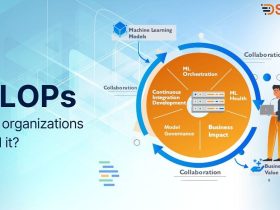In the world of Artificial Intelligence, natural language processing (NLP) has been a challenging area to work on. It is the ability of machines to understand, interpret, and generate human language. Over the years, several techniques have been developed to make NLP more effective, one of which is the development of large language models. These models have gone through various stages of evolution, with each stage being characterized by more sophisticated and advanced models. In this article, we will explore the evolution of large language models and how they have changed the field of NLP.
Introduction
The field of NLP has undergone a significant revolution in recent years with the advent of large language models. These models are designed to process human language data more effectively and efficiently than traditional NLP models. They are trained on massive amounts of data, which allows them to understand the nuances of human language better. As a result, large language models have become increasingly popular in a wide range of applications, from chatbots to search engines.
The Evolution of Large Language Models
BERT (Bidirectional Encoder Representations from Transformers)
BERT is a large language model that was developed by Google in 2018. It is a transformer-based model that is trained on massive amounts of data to understand the context of words in a sentence. BERT has been widely adopted in various NLP applications such as sentiment analysis, question answering, and text classification. The model’s architecture enables it to generate more accurate and meaningful responses.
GPT-3 (Generative Pre-trained Transformer 3)
GPT-3 is one of the most advanced large language models developed to date. It was developed by OpenAI and released in 2020. GPT-3 has been trained on a massive corpus of data, which makes it capable of generating human-like responses to complex questions. The model has been used to develop various applications, including chatbots, content creation, and even poetry. Its ability to generate high-quality content has made it a game-changer in the field of NLP.
MUM (Multitask Unified Model)
MUM is a large language model developed by Google in 2021. It is the latest addition to the evolution of large language models. MUM is designed to handle multiple tasks at the same time. It is also capable of processing data from multiple modalities, such as text, images, and videos. MUM’s ability to process multiple tasks simultaneously makes it highly efficient and effective. It has the potential to transform the way NLP is used in various applications.
PaLM (Pretraining and Language Model)
PaLM is a large language model developed by Facebook AI in 2019. It is a transformer-based model that is designed to learn the structure and syntax of language. PaLM has been trained on large amounts of data, which allows it to generate highly accurate responses to complex questions. The model’s ability to understand the structure of language has made it highly effective in various NLP applications such as summarization and machine translation.
How Large Language Models Have Changed NLP
The evolution of large language models has brought significant changes to the field of NLP. They have made it possible to process and understand human language more effectively and efficiently. Large language models have made NLP more accessible, enabling developers to build more intelligent and sophisticated applications. They have also made it possible to generate high-quality content more quickly and accurately, which has transformed the field of content creation.
Conclusion
The evolution of large language models has transformed the field of NLP. From BERT to GPT-3, MUM, and PaLM, each model has brought new capabilities and advancements to the field of NLP.









Leave a Reply